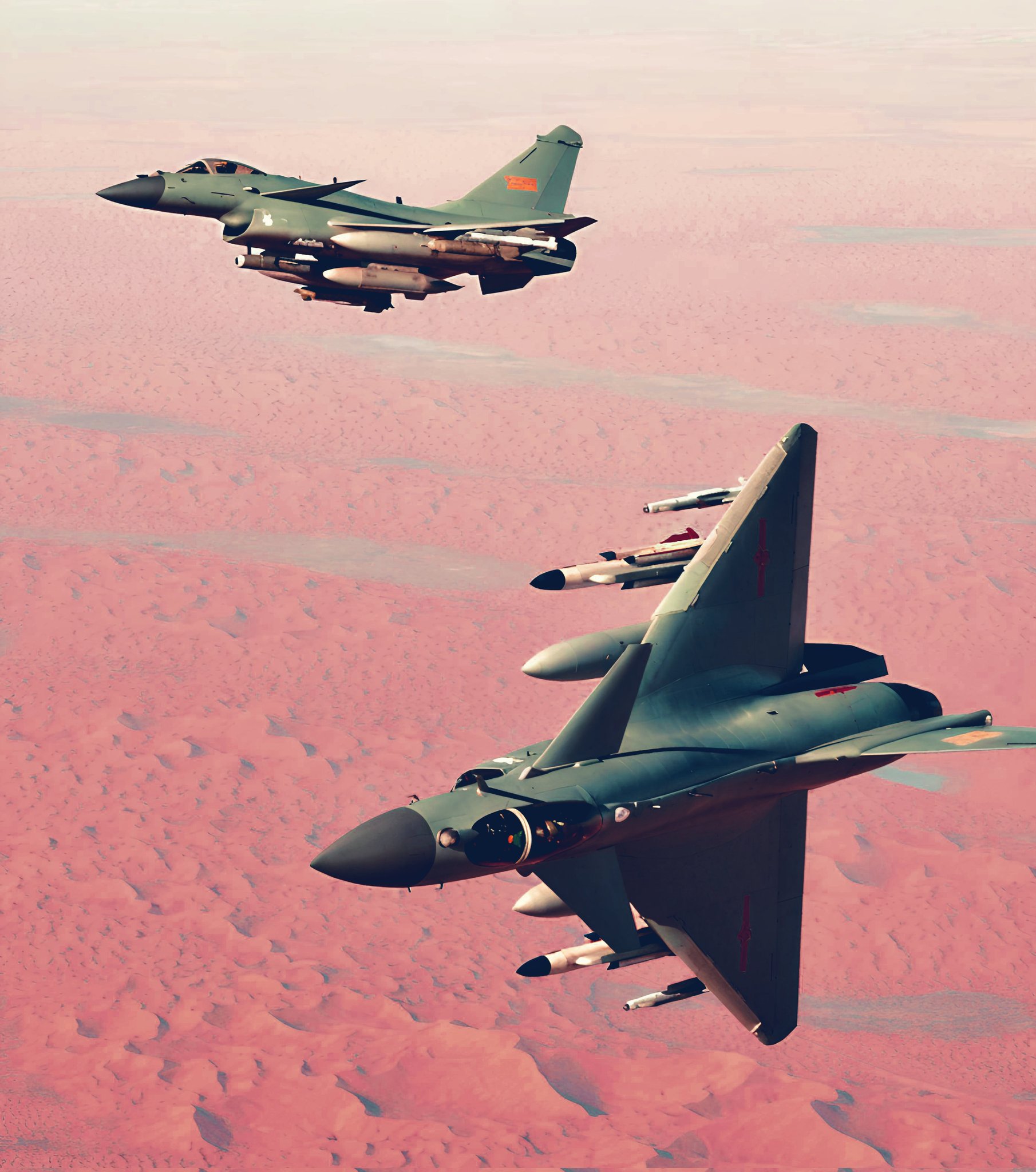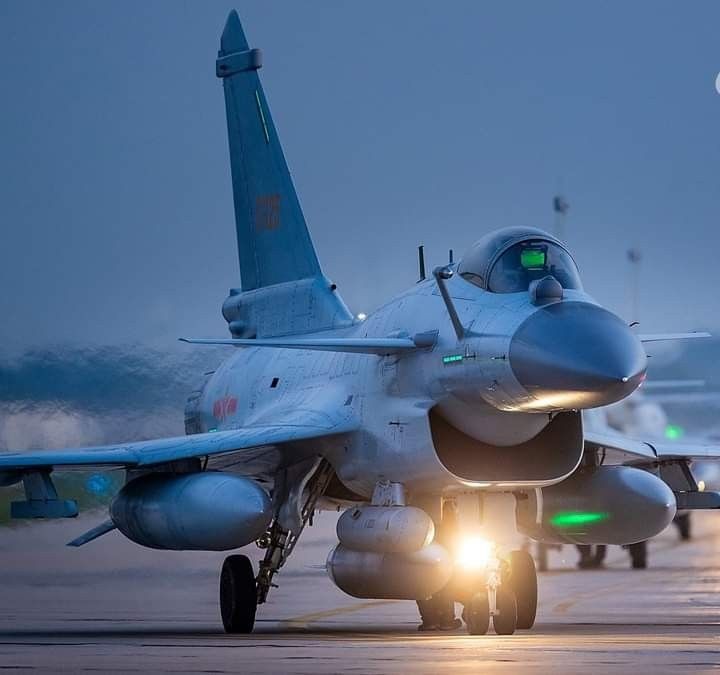Bangladesh Eyes Chinese J-10C Fighters in Bold Move to Reshape South Asia’s Air Power Balance
According to reports in the country’s local press, the Bangladesh Air Force (BAF) is actively pursuing the procurement of 16 J-10C fighters, a fleet that is expected to replace its aging legacy aircraft, including its long-serving Chinese-built F-7 interceptors.
(DEFENCE SECURITY ASIA) — Bangladesh is reportedly moving forward with plans to acquire the Chengdu J-10C multirole fighter from China, a step that would position Dhaka as the second operator of the advanced platform in South Asia after Pakistan, and mark a defining moment in the evolution of its airpower.
According to reports in the country’s local press, the Bangladesh Air Force (BAF) is actively pursuing the procurement of 16 J-10C fighters, a fleet that is expected to replace its aging legacy aircraft, including its long-serving Chinese-built F-7 interceptors.
The initiative reflects an urgent effort by Dhaka to modernize its aerial capabilities amid a shifting regional security environment marked by rising geopolitical rivalries and intensified airpower posturing among its neighbours.
Bangladesh Air Force Chief, Air Marshal Hasan Mahmud Khan, has publicly underscored the need for a generational leap in combat readiness.
“We are trying our best to acquire modern fighter jets and attack helicopters,”
he stated, as quoted by local media in reference to the force’s deepening interest in acquiring the J-10C.
The proposed acquisition of 16 aircraft is reportedly just the beginning of a phased modernization strategy, with potential follow-up orders expected to materialize as part of a long-term defence capability roadmap.
Earlier reports from August last year suggested that China had extended an offer to supply J-10C fighters to Bangladesh to replace its obsolete F-7s, continuing a longstanding tradition of Sino-Bangladeshi defence cooperation.

In a strategic move to counterbalance India’s acquisition of the Dassault Rafale, Pakistan inducted 25 J-10C aircraft in 2022, manufactured by Chengdu Aircraft Corporation, a deal that highlighted Beijing’s growing influence over South Asian aerial order-of-battle dynamics.
Beyond South Asia, Egypt is reportedly in advanced discussions to acquire the J-10C, viewing the fighter as a cost-effective and capable alternative to its aging U.S.-made F-16s, which have become increasingly difficult to maintain under the constraints of American export policies.
Unveiled publicly in July 2017, the J-10C entered operational service with the People’s Liberation Army Air Force (PLAAF) in 2018, and has since become a highly sought-after platform among countries looking for fourth-generation-plus capabilities without the political and financial baggage of Western systems.
In Zhuhai last year, during Airshow China 2024, the J-10C was closely examined by Azerbaijan’s Air Force leadership, signaling growing international interest in the fighter beyond Asia and the Middle East.
Regional defence analysts estimate that the PLAAF currently fields over 150 J-10C fighters, making it a backbone element of China’s tactical fighter fleet and a key component of Beijing’s evolving air dominance doctrine.

Unlike its earlier iterations, the J-10C features a redesigned airframe, improved stealth features, and is powered by the WS-10C indigenous turbofan engine, allowing for greater thrust-to-weight ratio, reduced infrared signature, and independence from Russian propulsion systems.
Its combat performance is further enhanced by the integration of active electronically scanned array (AESA) radar, a critical technology that provides superior situational awareness, multi-target tracking, and precision engagement in beyond-visual-range (BVR) scenarios.
While often likened to the American F-16, defence analysts highlight that the J-10C benefits from the technological lineage of Israel’s cancelled Lavi fighter project, which contributes to its aerodynamic efficiency and mission versatility.
One of the most potent features of the J-10C is its compatibility with the PL-15 BVR air-to-air missile, an advanced radar-guided munition reportedly developed with assistance from Russian missile engineers, boasting a claimed effective range between 200 and 300 kilometers.
The PL-15 has emerged as a direct competitor to the U.S.-built AIM-120 AMRAAM, and is regarded by many in the global defence community as a game-changing asset that could tip the balance of aerial engagements in favour of operators equipped with it.
China’s decision to equip the J-10C with the domestically produced WS-10C engine, rather than the Russian Saturn AL-31F, reflects not only a desire for technological autonomy but also a calculated move to minimize export-related political friction—especially in sensitive markets like Pakistan and Bangladesh.

Should Bangladesh finalize this high-profile acquisition, it would mark a substantial shift in South Asia’s airpower equilibrium, reinforcing Dhaka’s ability to assert air dominance and respond decisively to any incursions or provocations by regional adversaries such as India or Myanmar.
The addition of a 4.5++ generation multirole platform like the J-10C would significantly enhance Bangladesh’s deterrence posture, enabling it to project credible airpower and safeguard its territorial integrity amid escalating tensions in the Indo-Pacific.
The aircraft’s dual-role functionality—offering both air superiority and precision ground strike—would empower Dhaka to more confidently implement an Anti-Access/Area Denial (A2/AD) strategy, particularly in its Exclusive Economic Zone (EEZ) in the Bay of Bengal, an increasingly contested and strategically vital maritime domain.
Bangladesh has long been a key client of Chinese military hardware, operating a broad spectrum of Beijing-supplied systems including the MBT-2000 main battle tank, JF-17 Thunder light fighter, C-802A anti-ship missiles, and FM-90 short-range air defence systems, all of which form the foundation of its combined arms capability.

The integration of the J-10C would deepen this strategic defence relationship, ensuring seamless interoperability across air, land, and maritime domains while streamlining training, maintenance, and logistical support based on a shared technological ecosystem.
Such interoperability not only reduces operational costs and system redundancy, but also enables Bangladesh to establish a cohesive, sustainable, and highly responsive defence posture—one that is increasingly aligned with its national security imperatives in a volatile strategic environment.
— DEFENCE SECURITY ASIA



I am happy to know you that you are purchasing costly garbage from China.It will help Burma to handle bloody people of beggar Bangladesh.